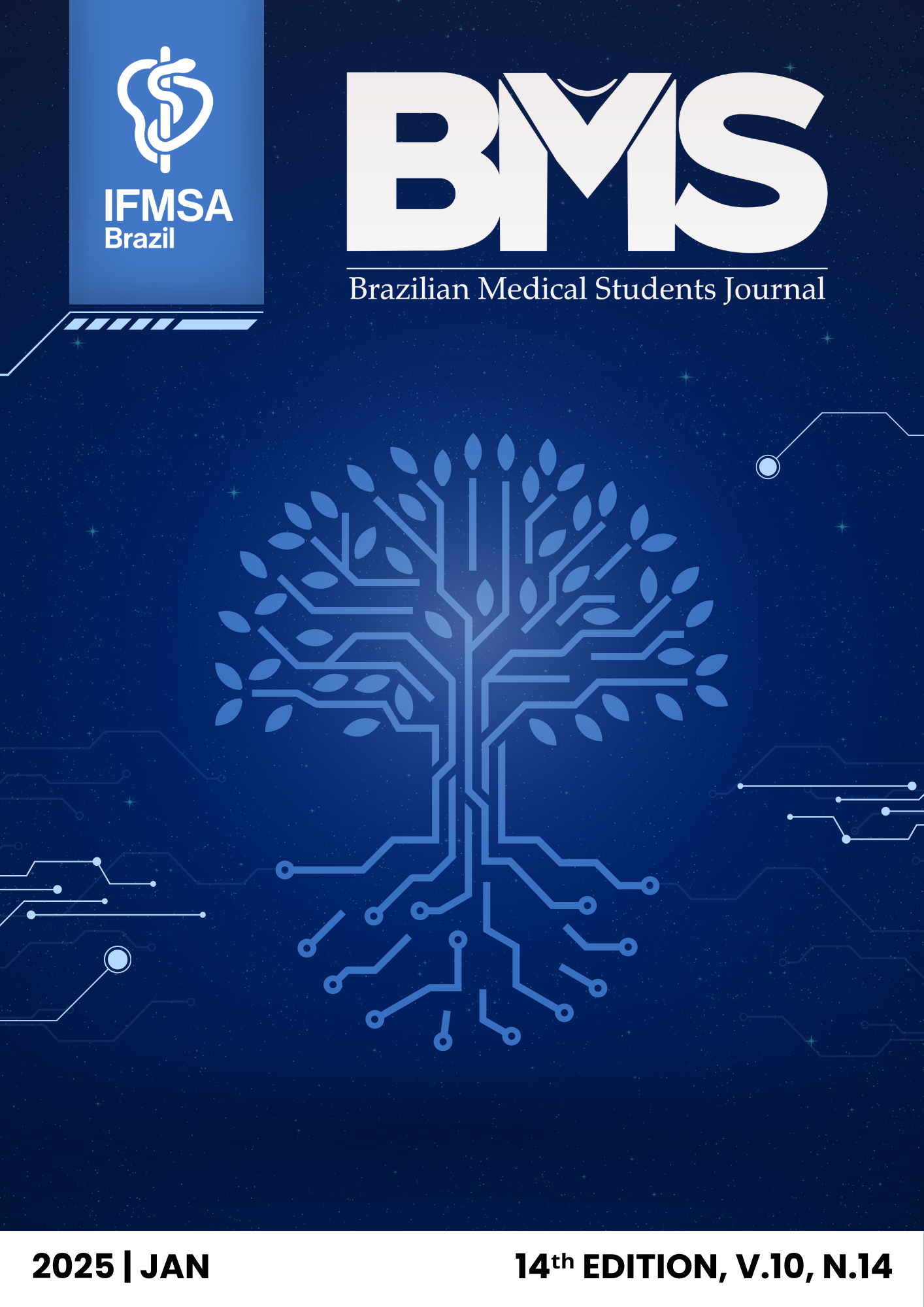Análise epidemiológica dos acidentes de trânsito no Brasil na última década
Keywords:
Acidentes de Trânsito, MORTE, PopulaçãoAbstract
Introduction: Brazil has recently witnessed a series of significant changes related to Road Traffic Accidents (RTAs). The evolution of these events represents a public health concern, affecting the economy and the population's quality of life. This study analyzes the epidemiological profile of RTA-related deaths in Brazil between 2012-2022, with a view to understanding the affected population and possible causes. Methodology: Cross-sectional ecological study, using data from DATASUS on RTA deaths and the variables: gender, marital status, age group, religion, race/color, state of residence and type of RTA. Results: Between 2012 and 2022, there were 157,591 deaths (23.05%) from RTA in the North. Most of them were men (82.66%), aged 20 to 39 (45.9%), single (52.6%), brown (75.3%), with 1 to 7 years of schooling (42.1%). The Northeast recorded 122,898 deaths, (22.94%) from RTA, (85.17%) males, (45.2%) aged 20 to 39, (77.4%) brown, (42.9%) 1 to 7 years of schooling. The Southeast recorded 136,586 deaths (22.88%) from RTA, males (81.6%), whites (53.4%), 20 to 39 years old (41.9%), 1 to 7 years of schooling (33.5%). In the South, there were 67,478 deaths (28.94%) from RTA, (80.2%) males, whites (84.3%), schooling (37.2%) from 1 to 7 years of schooling. In the Midwest, there were 43,960 deaths (30.09%) from RTA, 20 to 39 years old (41.5%), brown (58.4%), 1 to 7 years of schooling (38.2%). Discussion: RTAs represent a proportion of deaths from external causes, predominantly in men aged 20 to 39, single and with low levels of education, with color/race varying between regions. Conclusion: A relationship was found between RTAs and sociodemographic characteristics. Safety policies that are sensitive to regional differences and education that focuses on the target public are recommended.
References
Beatriz A, Taísa Vieira Garcia, Gustavo, Rodrigues E, Patrícia Bossolani Charlo, Marcelo da Silva. Caracterização epidemiológica e sociodemográfica de acidentes de trânsito: uma revisão integrativa da literatura. Saúde Coletiva. 2020 Sep 3;10(55):2797–814.
Bechlin AR, Mantovani GG, Piffer M. CARACTERÍSTICAS DA MORTALIDADE DOS ACIDENTES DE TRÂNSITO NO BRASIL. SLAEDR [Internet]. 3º de dezembro de 2021.
Bertho ACS, et al. Mortes por acidentes de trânsito nas capitais do nordeste e do sudeste: diferenças regionais. Anais. 2017; p. 1-19.
MT de, Nébia Maria Almeida de Figueiredo. ACIDENTES DE TRÂNSITO. Ambiente: Gestão e Desenvolvimento. 2019 Dec 26;12(3):123–43.
Campos Soares L, Do Prado HA, Balaniuk R, Ferneda E, De Bortoli A. Caracterização de acidentes rodoviários e as açoes governamentais para a redução de mortes e lesões no trânsito. Revista Transporte y Territorio. 2018 Dec 28;0(19).
Rios PAA, Mota ELA, Ferreira LN, Cardoso JP, Ribeiro VM, Souza BS de. Factors associated with traffic accidents among drivers: findings from a population-based study. Ciência & Saúde Coletiva [Internet]. 2020 Mar 6;25(https://doi.org/10.1590/1413-81232020253.1192201):943–55. Available from: https://www.scielosp.org/article/csc/2020.v25n3/943-955/en/
Felix FEG, Nascimento EGC do. ADESÃO A EQUIPAMENTOS DE SEGURANÇA NO TRÂNSITO POR MULHERES. Saúde e Pesquisa. 2018 Aug 30;11(2):369.
Abreu ÂMM, Lima JMB de, Matos LN, Pillon SC. Uso de álcool em vítimas de acidentes de trânsito: estudo do nível de alcoolemia. Revista Latino-Americana de Enfermagem [Internet]. 2010 Jun 1 [cited 2022 Apr 28];18(https://doi.org/10.1590/S0104-11692010000700005):513–20. Available from: https://www.scielo.br/j/rlae/a/fJkdwS7jqqStBCh8Q8hyjtf/abstract/?lang=p
IBGE – Instituto Brasileiro de Geografia e Estatística. Censo Brasileiro de 2022. Rio de Janeiro: IBGE; 2012. Available from: https://censo2022.ibge.gov.br/
Rocha GS, Silva CÁ da, Crispim LV. Gravidade e lesões traumáticas em vítimas de acidente de trânsito internadas em um hospital público. Revista de Enfermagem do Centro-Oeste Mineiro. 2021 Jul 23;11 (https://doi.org/10.19175/recom.v11i0.3870).
Downloads
Published
How to Cite
Issue
Section
License
Copyright (c) 2025 Rayssa Santos Arcanjo, Brendo Cardoso dos Santos, Ana Letícia Barros de Souza, Clara Liz Pereira de Souza, Maria Julia Carvalho Pinto, Maria Dácila Vitorino de Oliveira, Larissa Chastinet Oliveira

This work is licensed under a Creative Commons Attribution 4.0 International License.
User licenses define how readers and the general public can use the article without needing other permissions. The Creative Commons public licenses provide a standard set of terms and conditions that creators and other rights holders can use to share original works of authorship and other material subjects to copyright and certain other rights specified in the public license available at https:// creativecommons.org/licenses/by/4.0/deed.pt_BR. Using the 4.0 International Public License, Brazilian Medical Students (BMS) grants the public permission to use published material under specified terms and conditions agreed to by the journal. By exercising the licensed rights, authors accept and agree to abide by the terms and conditions of the Creative Commons Attribution 4.0 International Public License.


